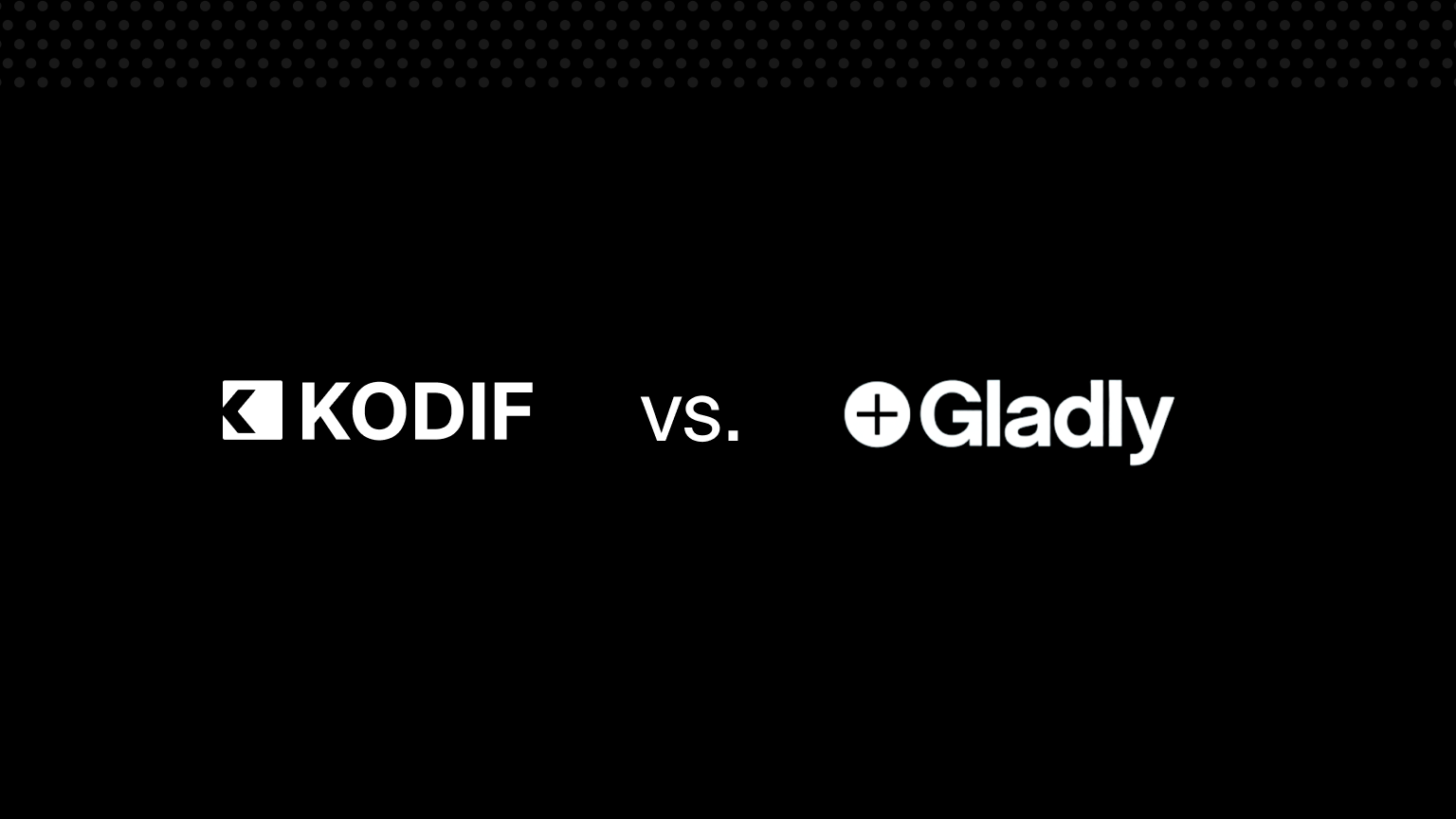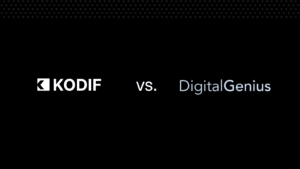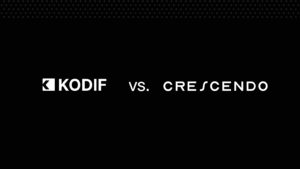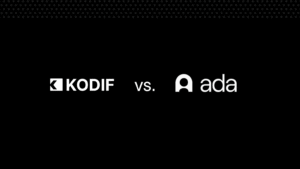When evaluating CX automation technology, it’s easy to get lost. Both KODIF and Gladly help support teams streamline workflows, but they approach the problem from very different angles.
Gladly positions itself as a conversation-first helpdesk with a focus on unifying customer interactions across channels.
KODIF, on the other hand, is an AI-native automation platform built specifically for ecommerce brands, powering full-funnel automation from pre-purchase through post-purchase.
If you’re weighing the two, here’s how they stack up.
TL;DR
- Gladly: Best fit if you need a modern, omnichannel ticketing system with a strong focus on agent efficiency and customer identity across channels.
- KODIF: Best fit if you want AI teammates that handle full end-to-end automation, not just after-the-fact service, but also pre-purchase engagement, revenue retention, and CX optimization.
Platform philosophy
When you look at the two platforms side by side, the biggest differences show up in their underlying philosophies.
While both aim to improve customer experience, they’re built with very different assumptions about what matters most and how teams should get there:
| KODIF | Gladly | |
| Core focus | AI-native automation for ecommerce CX | Omnichannel helpdesk built around customer identity |
| Approach | AI teammates automate repeatable tasks, augment agents, and continuously improve processes | Centralized customer timeline so agents see all conversations in one place |
| Scope | End-to-end: pre-purchase, purchase, post-purchase, retention | Primarily post-purchase support |
Ecommerce depth
Another key difference is how deeply each platform is built for ecommerce.
KODIF was designed with native integrations and revenue-driving use cases in mind, while Gladly takes a more traditional helpdesk approach that focuses mainly on post-purchase support:
| KODIF | Gladly | |
| Ecommerce integrations | Native integrations with Shopify, Recharge, Skio, Rebuy, LoopReturns, ShipMonk, Klaviyo, Yotpo, and 100+ more | Minimal ecommerce integrations, and limited capabilities even for existing ones |
| Pre-purchase use cases | Cart recovery, personalized product recommendations, churn-save flows | Not designed for pre-purchase conversion |
| Post-purchase use cases | Order tracking, returns, cancellations, subscription edits, warranty checks | Core focus: agent handling of returns, cancellations, order questions |
Automation
AI is another area where the platforms diverge. KODIF emphasizes no-code automation and experimentation, giving teams more control over what AI can actually do, while Gladly leans toward lighter assistive tools that keep agents at the center:
| KODIF | Gladly | |
| AI capabilities | No-code workflows, agentic AI that can resolve tasks (refunds, subscription edits, order updates) end-to-end | Chatbot and agent assist available, but less customizable |
| Self-service | Prebuilt + custom workflows customers can trigger instantly | Focuses on routing to the right agent |
| Experimentation | Built-in testing and reporting to optimize flows | Limited A/B testing functionality |
Control and customization
When it comes to building and customizing workflows, the difference is in who each platform is designed for.
KODIF gives CX leaders direct control with a no-code builder tailored to ecommerce, while Gladly’s tools remain closer to traditional helpdesk configurations:
| KODIF | Gladly | |
| No-code builder | Automation builder designed for CX leaders (no engineers required) | Configurable helpdesk with some no-code options, but workflows are more agent-centric |
| Customization | Brand-level tone, policies, and ecommerce-specific logic | Customizable macros and workflows, but less granular automation |
Support and operations
Finally, there’s the question of day-to-day ownership. KODIF is built so CX and ops teams can launch quickly and keep improving without heavy dependencies, while Gladly leans more on traditional admin support and agent training.
| KODIF | Gladly | |
| Implementation | Quick setup, supported by a dedicated CSM and implementation partner | Setup can be time-consuming and requires support, often at a substantial additional cost |
| Ongoing maintenance | Designed so CX/ops teams can own and iterate themselves | Often requires ops or admin resources to maintain |
| Global teams | AI runs 24/7, escalation routing to human agents when needed | Focus on helping live agents work more efficiently |
Who we are
At KODIF, we believe AI shouldn’t just deflect tickets, it should act as a teammate. Our platform was built by CX and engineering leaders to empower ecommerce brands with:
- Full customer journey coverage (pre-sale → loyalty)
- No-code workflows that CX teams own directly
- Continuous improvement through insights, topic discovery, and AI-human collaboration
We’re laser-focused on ecommerce, so our integrations and workflows are designed to solve the exact problems retail and DTC brands face every day.
Bottom line
- Choose Gladly if your #1 priority is an agent-first helpdesk with a strong omnichannel timeline view.
- Choose KODIF if you want an AI-native automation layer that actually drives revenue, reduces churn, and makes your CX team faster without adding headcount.
More interested in KODIF?
Here are some more details on KODIF and what we can do.
| Area | Details | Why it matters |
| Core positioning | No-code automation layer across CRMs and tool stack | Avoids re-platforming, faster value |
| Returns/refunds | Deep integrations (Shopify, Recharge/Loop, etc.), label/refund actions | Automates top D2C drivers |
| Builder experience | Natural language, transparent reasoning | Client ops can own iteration and AI is not black box |
| Agent Assist | CRM co-pilot and “side-pane” drafts, fallback via tags/views | Higher agent efficacy |
| Knowledge/policy | Skills library, versions, audit trails | Governance for 1 → 100 |
| APIs/Webhooks | Webhook node + attribute routing | Allows for proactive flows and integrations |
| Reporting | Light native, export events to data warehouse | BYO analytics with full observability |
| Compliance | SOC2, GDPR, CCPA, ISO 27001, HIPAA | Meets procurement needs and minimizes legal drag in acquisition |
Want to learn even more and see it all in action? Book a demo!









